Romance Author’s Guide to Creating and Selling Merch
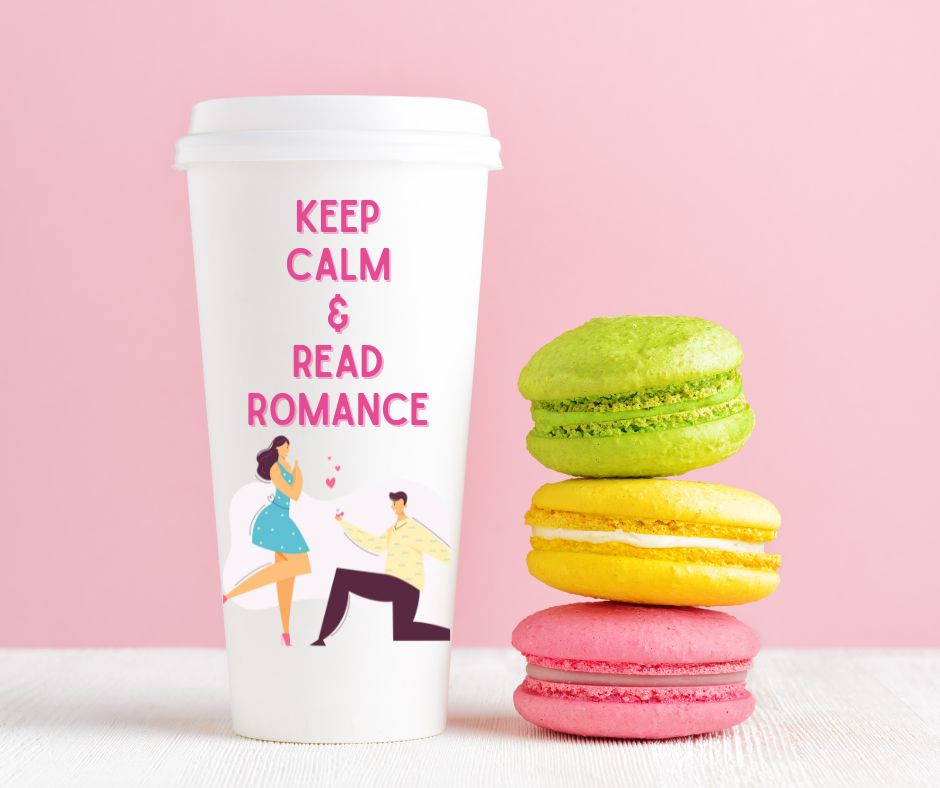
Table of Contents
Selling merch as an author has become increasingly popular due to its potential for enhancing author branding and generating additional income streams. Author merch are the products and items that authors create and sell to their fans as a way to promote their brand and connect with their readers.
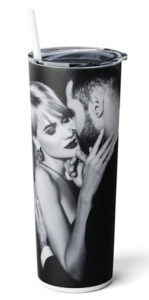 Author merch can come in various forms, including but not limited to t-shirts, hoodies, mugs, bookmarks, tote bags, stickers, and even personalized bookplates. These items are often designed with unique logos or artwork that represents the author’s brand or features quotes from their books. By incorporating elements from their writing into these products, authors can further engage with their readership and create a sense of community among fans.
Author merch can come in various forms, including but not limited to t-shirts, hoodies, mugs, bookmarks, tote bags, stickers, and even personalized bookplates. These items are often designed with unique logos or artwork that represents the author’s brand or features quotes from their books. By incorporating elements from their writing into these products, authors can further engage with their readership and create a sense of community among fans.
The benefits of selling author merch extend beyond just financial gains. Author merchandise acts as a form of self-promotion and allows writers to strengthen their personal brand. It serves as a visible reminder of an author’s work and can spark conversations about their books among friends or strangers who see someone wearing or using the merchandise.
Moreover, author merch provides an opportunity for authors to connect directly with their audience through limited-edition releases or exclusive items only available for purchase on their website or at events like book signings or conventions. This exclusivity adds value to the merchandise while fostering a sense of loyalty among fans who want to support the author’s career.
Here’s how to create author merch for your brand and books.
Understand Your Audience
Romance readers come from all walks of life, but they share a common love for stories that send them on an emotional roller coaster ride ending with a swoony HEA. To create merch that resonates, you need to know who your readers are and what they cherish in your stories.
Start by analyzing your current readership. Consider age, gender, interests, and even the social media platforms they frequent. Are your books more popular with young adults craving the intensity of first loves, or do they appeal to a more mature audience seeking tales of second chances and renewed passions?
You also want to consider what it is about your books that readers enjoy. Is there a favorite quote? Do the love a specific cover? In terms of branding perhaps you fans have a special name in the same way Taylor Swift fans are referred to as swifties. Perhaps this is your reader group name.
Merch Ideas for Romance Writers
Romance readers cherish items that make the stories they love a tangible part of their lives. Here are some popular merch ideas:
- Quote Merchandise: Items like bookmarks, tote bags, and mugs featuring favorite quotes from your books can become everyday reminders of the emotions your stories evoke.
- Character Artwork: Commissioning artwork of beloved characters can turn into posters, postcards, or even clothing items, allowing fans to visually celebrate their favorite moments.
- Themed Jewelry: For historical romance, think of creating pieces that reflect the era of your stories, like lockets or cameo brooches. For paranormal romance, consider mystical symbols or creature-inspired designs.
Importance of Aligning Merch with Your Book Themes and Genres
The key to successful author merch is ensuring it reflects the essence of your stories. For historical romance authors, this might mean creating items that echo the elegance and detail of the periods you bring to life. Contemporary romance writers might opt for modern, chic designs that resonate with today’s readers. If you write paranormal romance, your merchandise could feature elements of fantasy and mystery, appealing to readers who love to escape the ordinary.
Aligning your merch with your book themes not only enhances the appeal of the items but also strengthens your brand as an author. It turns your merchandise into an extension of the worlds you create, offering your readers new ways to connect with your stories and share their love for them with the world.
Here are specific merch ideas:
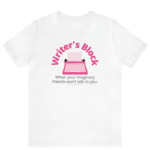
1. T-shirts and apparel: Designing t-shirts with book quotes, character illustrations, or even personalized graphics can be an excellent way for authors to promote their work while giving readers something they can wear as a statement piece.
2. Bookmarks: Customized bookmarks featuring beautiful designs or quotes from the author’s books make for practical yet visually appealing merchandise items. They serve as subtle reminders of the author’s work every time readers open their books.
3. Mugs and drinkware: Coffee mugs adorned with witty book-related phrases or elegant designs can bring joy to avid readers who enjoy sipping beverages while diving into captivating stories.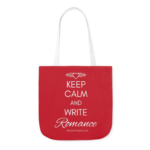
4. Tote bags: Functional and eco-friendly tote bags featuring stylish artwork related to an author’s books make for useful accessories that fans can use in their everyday lives while showcasing their love for the writer’s work.
5. Stationery: Creating custom stationery sets including notebooks, journals, pens, or pencils allows both writers and readers alike to indulge in the art of putting pen to paper while promoting an author’s brand.
6. Collectible items: Limited edition collectibles like signed bookplates, exclusive art prints, or even themed puzzles appeal not only to dedicated book enthusiasts but also collectors who appreciate unique pieces related to their favorite authors.
7. Other/Miscellaneous: There are so many items you can put your stamp on from stickers and notebooks, to coasters and wall hangings, pajamas, candles, and blankets, and more!
Design Tips
Creating merchandise that captures the essence of your romance novels requires thoughtful design. Whether you’re crafting these designs yourself or working with a professional, the goal is to create items that are both visually appealing and resonant with your brand. Here are some tips and best practices to ensure your merchandise stands out:
- Focus on Key Elements: Choose one or two elements that represent the core of your story—be it a poignant quote, a symbolic image, or a character illustration. Simplicity in design can often convey your message more powerfully than a cluttered image.
- Use High-Quality Images: Ensure that any graphics or photos are high resolution to avoid pixelation when printed on merchandise.
- Color Choices: Select colors that complement each other and reflect the mood of your book. Soft, romantic palettes work well for sweet romance, while bolder colors may suit stories with a bit of intrigue or suspense.
Resources to Create Your Design
- Canva: Canva makes it easy for non-designers to create a quality merch designs. With a variety of new app-integrations (pro-version), you have tons of tools to help you get the right tone and feel of your design.
- Adobe Express: Before Canva, I used Adobe Printshop and later Elements. Adobe Express offers the ease of use like Canva. It has free and premium versions as well.
Tips for Hiring a Designer (If Not DIY-ing)
- Portfolio Review: Look for designers whose style aligns with your vision. Review their portfolios to ensure they have experience in creating the type of merchandise you want.
- Clear Communication: Communicate your ideas and expectations clearly. Provide examples of designs you like, and don’t hesitate to discuss revisions.
- Rights and Ownership: Ensure you have a clear agreement regarding the rights to the designs. You should own the rights to use the designs for your merchandise.
Resources for Finding Designers:
- Fiverr: Freelance platforms with a wide range of designers offering services at various price points.
- 99designs: A design contest platform where multiple designers submit concepts based on your brief, and you choose your favorite.
- Behance: Adobe’s platform to showcase and discover creative work, where you can find professional portfolios to choose from.
Finding a Reliable Supplier for Your Author Merchandise
In past, just like in vanity publishing, creating merch often meant having an inventory of totes, t-shirts, etc that you’d have to pack and ship. Today, again like books, you can order print-on-demand (POD) merch products that are drop shipped to your fans.
Here are a few things to consider when choosing a merch supplier:
- Quality products: Many POD suppliers have a variety of options of brands from which to create your product as well as supplier choices. While you can research reviews, it helps to order the item so you can insure it’s quality.
- Fulfillment services: Choose a supplier who offers reliable fulfillment services, with experience in handling orders efficiently and has seamless integration with popular e-commerce platforms. Most fulfillment services will provide timeframes for product creation and shipping.
- Pricing: Find a supplier with competitive pricing to lower your costs and increase your profits without sacrificing quality. Most fulfillment services offer a variety of brands of various prices and quality from which to choose. For example, your t-shirt brand choice can be Champion, Hanes, Belle+Canvas, and “Generic”. Each has it’s own base price.
- Drop shipping: Ideally, you want a fulfillment company that will put your brand on the package so it appears to be coming from you.
- Sustainability: Consider eco-friendly options for your merchandise, such as organic cotton apparel or reusable items, to appeal to environmentally conscious readers.
- Worldwide Options: Does the supplier ship abroad or have an abroad-bases supplier to fulfill merch orders outside of your country?
There are several merch supplier resources to check out.
Printify: This is what I use for just about everything from t-shirts, totes, mugs, tumblers, and notebooks. But that’s not all. Printify has an extensive catalog of products, ranging from apparel and accessories to home decor and stationery, allowing authors to find the perfect medium for their book-themed designs. Printify simplifies the merchandising process with its user-friendly interface and integration with major e-commerce platforms like Shopify, Etsy, and WooCommerce, making it easy for authors to set up shop and start selling. It has a free and premium plan that offers deeper discounts on the cost of items.
Printful: Similar to Printify, Printful offers a large catalogue of merch, integration with e-commerce platforms, and POD fulfillment. It has a free and premium plan that offers deeper discounts on the cost of items.
RedBubble: Many authors use this resource as it offers merch creation and ecommerce. It has a wide variety of merchandise you can create and sell. It does not integrate with other platforms, although it appears you can feed your RedBubble items onto your website. RedBubble doesn’t have a pricing plan and instead takes a percentage of the designer’s net which appears to be close to 50%. If you sold a $20 t-shirt, earning $5 net after cost of shirt and shipping, Redbubble’s fee is $3.05, leaving you with $1.95 profit. You can see sample author merch on Redbubble here.
Vista Print: I use Vista Print for banners and paper items like book postcards, but it does have a larger catalogue of merch options. I wasn’t able to determine if it offered POD and drop shipping. Vista Print might be better suited to swag items you carry with you to events such as paper items, pens, book marks, etc.
Selling Your Merch
Once you’ve created your merchandise, the next step is to find the right platform to sell it. Each platform has its own set of benefits, and choosing the right one can help you reach your target audience effectively. Additionally, setting up your online store, pricing your merchandise correctly, and marketing it effectively are crucial steps in ensuring your merchandising venture is successful.
Overview of Platforms for Selling Merch
- Own Website: Creating a store on your own website gives you complete control over the branding and customer experience. Platforms like Shopify, WooCommerce (for WordPress sites), and Squarespace offer easy integration of ecommerce functionalities. Printify integrates with these options.
- Shopify: This is the big-daddy of ecommerce. It’s easy and affordable to start (free trial and $1 for the first month, basic plan $39). Shopify offers a ton of apps and addons and bells and whistles where you can build an author store that includes your books, your merch, and more. You can integrate Shopify store into you WordPress website. Printify integrates with Shopify.
- Etsy: Ideal for handmade or personalized items, Etsy reaches a wide audience looking for unique and custom products. It’s user-friendly and has a built-in audience interested in creative goods. Printify integrates with Etsy.
- RedBubble: A print-on-demand platform that allows you to upload designs that can be printed on a variety of products. Redbubble handles production, shipping, and customer service, making it a hassle-free option for selling.
Setting Up an Online Store: Basics and Best Practices
- Choose the Right Platform: Consider your needs, technical skills, and the type of merchandise you’re selling when choosing a platform.
- User-Friendly Design: Ensure your store is easy to navigate, with clear categories and high-quality images of your merchandise.
- Mobile Optimization: A significant portion of online shopping is done on mobile devices. Ensure your online store is mobile-friendly.
- Secure Payment Options: Offer multiple, secure payment methods to accommodate different preferences. Most of the above allow PayPal and Stripe.
Pricing Strategies for Your Merchandise
- Cost-Based Pricing: Calculate the cost of producing your merchandise, including the cost of materials, production, shipping, and any platform fees. Add a markup to ensure profitability. The fulfillment services will provide you with this information.
- Market Comparison: Research what similar items are selling for on your chosen platforms. Pricing competitively while ensuring your costs are covered is key.
- Value-Based Pricing: Price your items based on the perceived value to your readers. Limited edition items or merchandise featuring unique designs may command a higher price.
Marketing Your Merch
- Social Media: Use platforms like Instagram, Facebook, and Twitter to showcase your merchandise. Engaging posts that feature your products in use can attract attention.
- Email Newsletters: Share updates about new merchandise, special offers, or behind-the-scenes looks at the creation process with your email subscribers.
- Book Events: Wear or display your merchandise at book signings, conferences, and other events. Offering merchandise as part of book bundles can also drive sales.
- Influencer Partnerships: Collaborate with book bloggers, reviewers, or other authors in your genre to reach a wider audience.
Legal Considerations
When venturing into the realm of author merchandise, it’s crucial avoid using protected designs, as well as protecting your work.
Copyrights and Trademarks: Protecting Your Work and Respecting Others’
- Copyright: Copyright protects original works of authorship, including literary works, art, and designs. As an author, your books are automatically copyrighted upon creation. When creating merchandise, ensure that any text, images, or designs used are either your own or you have permission to use them.
- Trademarks: If you have a unique logo, brand name, or catchphrase associated with your books or author brand, consider registering them as trademarks. This provides exclusive rights to use them on merchandise and protects against unauthorized use.
Understanding Licensing if Using Third-Party Designs or Collaborating with Artists
- Licensing Agreements: If you’re using designs, artwork, or photographs created by someone else, you’ll need to obtain a license to use these materials on your merchandise. Licensing agreements should clearly state the scope of use, duration, and any royalty payments. When using a tool like Canva and accessing their designs, the site indicates that items are available for commercial use. For more information visit Canva’s explanation of licensing rights. Note that there is debate about AI generated images and whether they infringe on copyright. Canva now offers access to AI tools for generating designs. Further, it appears, at this time, that you can’t copyright AI generated graphics that you create.
- Collaboration with Artists: When collaborating with artists, it’s important to have a written agreement that outlines the terms of the collaboration, including rights to the artwork, payment, and how the artwork can be used. Ensure both parties understand whether the artist is transferring the copyright to you or granting a license for specific uses.
Engaging with Your Community
Merchandise isn’t just a way for readers to show their love for your books; it’s also a powerful tool for building and engaging your community. Creative use of merch can foster a deeper connection between you and your readers, turning fans into active participants in your author journey. Here are some strategies to leverage merchandise for community engagement:
Using Merch as a Tool for Reader Engagement
- Contests and Giveaways: Host contests or giveaways on your social media platforms or through your newsletter. Use your merchandise as prizes to generate excitement and encourage participation. For example, you could ask readers to share their favorite quotes from your books or create fan art for a chance to win.
- Reader Polls for New Merch Ideas: Involve your community in the merchandising process by conducting polls or asking for suggestions on what type of merch they’d like to see next. This not only gives you valuable insights into your audience’s preferences but also makes them feel valued and heard.
Showcasing Fan Pictures with Your Merch as a Community-Building Activity
- Fan Feature Fridays: Dedicate a day of the week to featuring fans wearing or using your merchandise on your social media channels. Encouraging fans to share their photos with a specific hashtag can make it easy to find and showcase these posts.
- Testimonials and Stories: Share stories or testimonials from readers about what your books or merchandise mean to them. This can be a powerful way to highlight the impact of your work and build emotional connections within your community.
Gathering and Incorporating Reader Feedback for Future Merch Lines
- Feedback Surveys: After releasing new merchandise, consider sending out a feedback survey to purchasers. Ask about their satisfaction with the quality, design, and overall experience. This feedback can be invaluable for improving future merchandise offerings.
Did you know that Write with Harte has some merch? You can check it out here: Write with Harte Shop






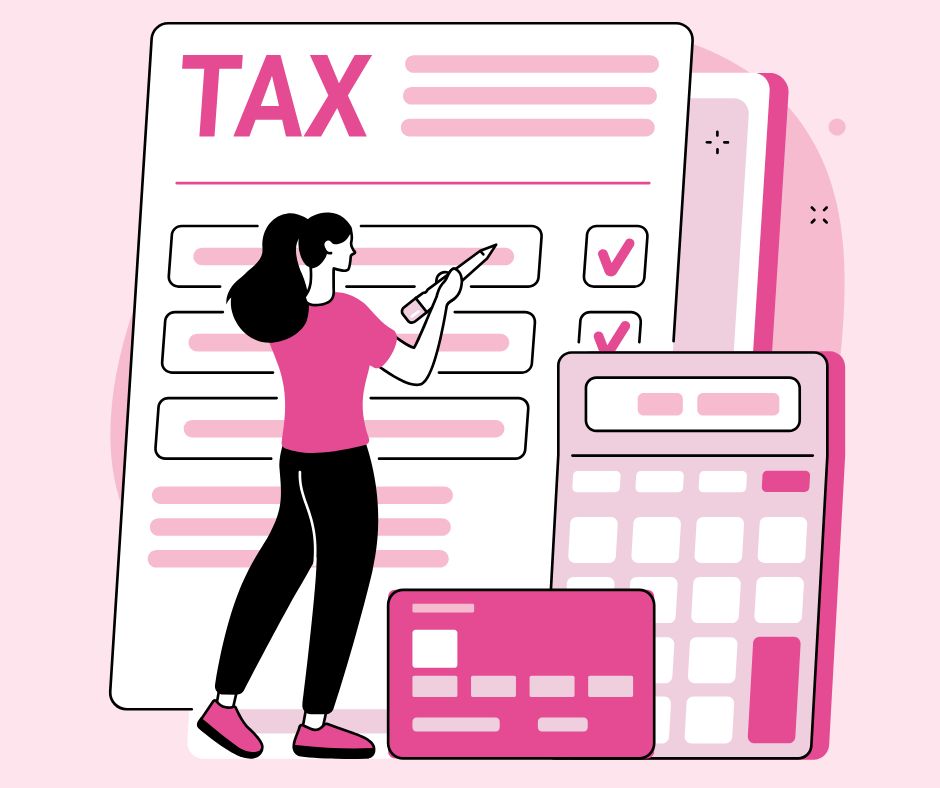

Responses